Chupacabra season
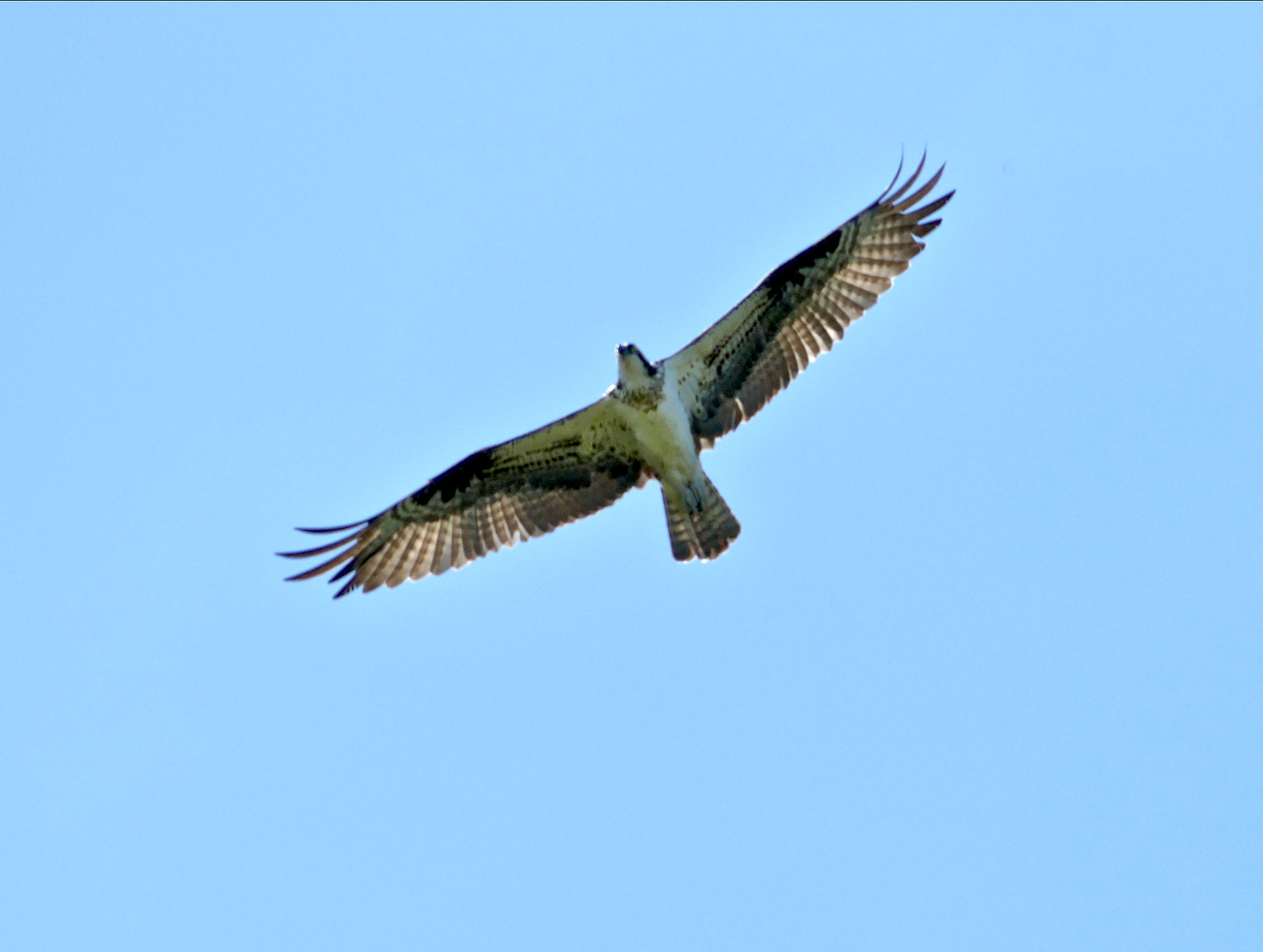
The cool northern winds of autumn blew in Friday afternoon, bringing the season of the raptors. The osprey are back patrolling the river. You can hear them before you see them usually, that distinctive whistle, and then you watch them circle and hope you will get to see them dive. When they do, it is so fast and hard, so superior in its complex flight mechanics, that you realize any comparison to our own airborne machines of death falls short.
The hawks are here all summer long, but they seem to thrive in the cooler months. It may be that the disappearance of the leaves opens up new vantages that expand their domain. The clearing of the overstory definitely lets you see more of them from October through February, and after a few years around these urban woods you come to appreciate just how much they rule them.
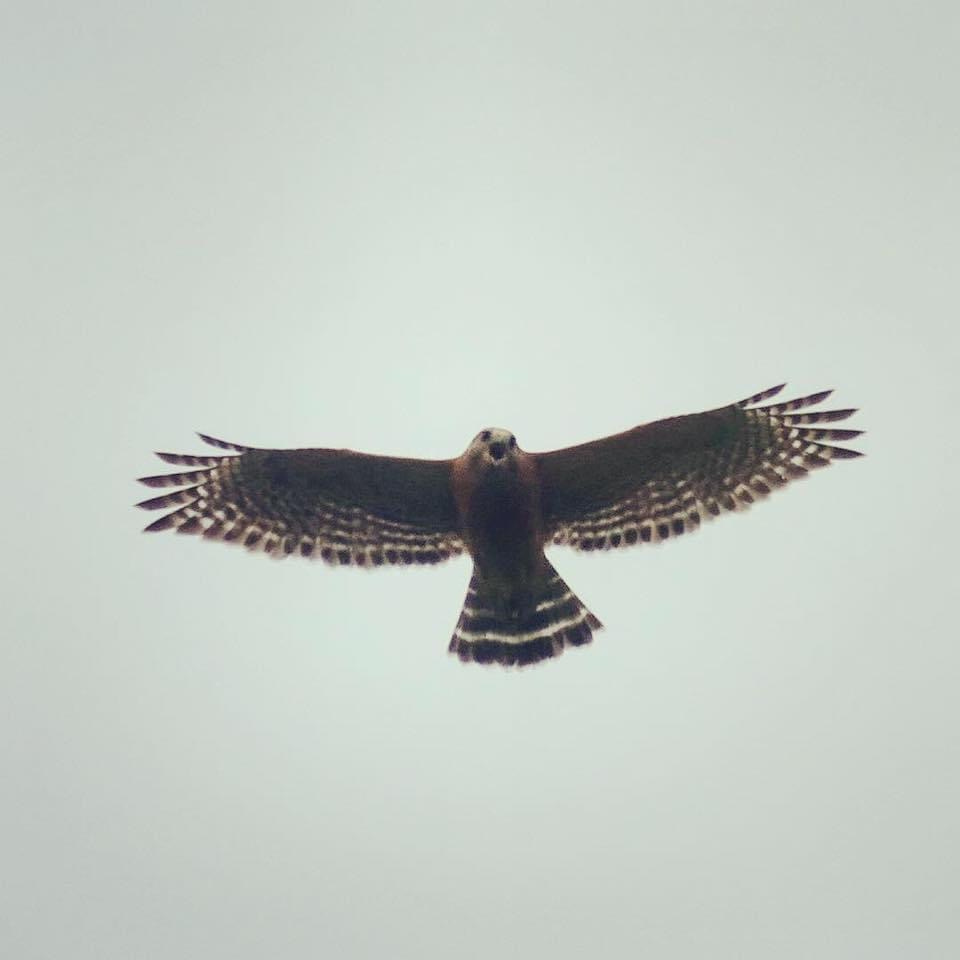
There’s a little traffic island near here where one pair of red-shouldered hawks has nested in the tall trees between two onramps. Last week there was a landscaping crew out cleaning up that lot, which for more than a year now has had a big sign up advertising the office building they plan to construct there, one of those renderings where they strip the automobiles of their identifying logos and remind you that most of the built environment comes from real estate quants manipulating spreadsheets in air-conditioned rooms.
The landscaping crew cut down a bunch of the trees back in there, mowed the grass, and even removed the basketball hoop that has been standing there in an overgrown field long past any living memory of whatever use once brought the players. But they didn’t really penetrate those woods all the way, leaving a pretty expansive camp someone has established there over the past few months.
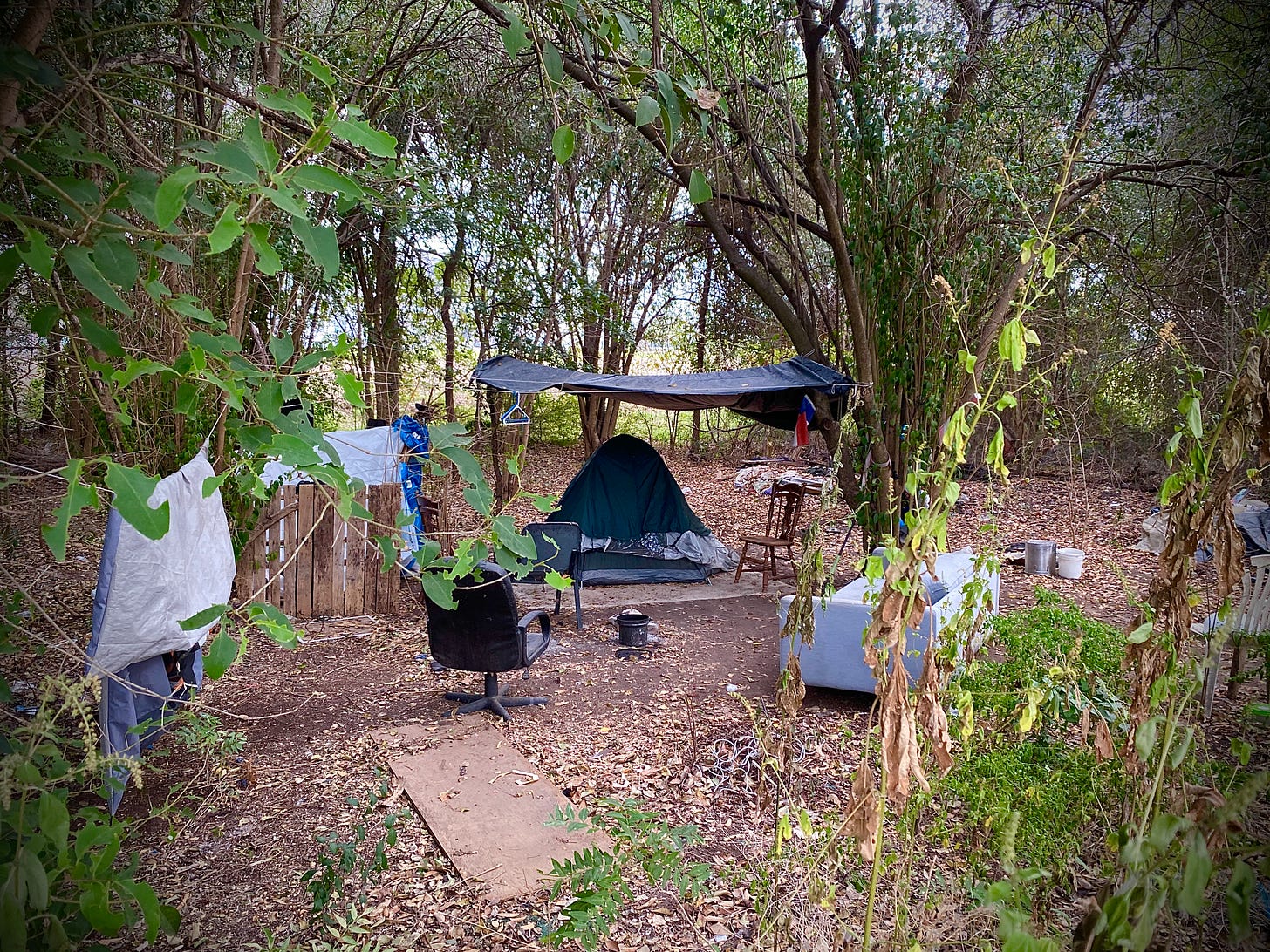
It may be that the camp is outside the property of the developers preparing the site for more profitable uses. It may even be on public land, part of the right of way of those onramps, in which case it is a place where one can legally camp under current municipal code. I came upon another such spot on Thursday, where the surveyors have freshly staked the spot behind the bank where the private property ends and the river bluff begins, and a much bigger camp has been built above the spillway of the dam, a camp so big the city has installed four portable toilets, several trash bins and a bottomless hand sanitizer dispenser. The survey stakes run right through the middle of the camp, like a dotted line made real. Cut here.
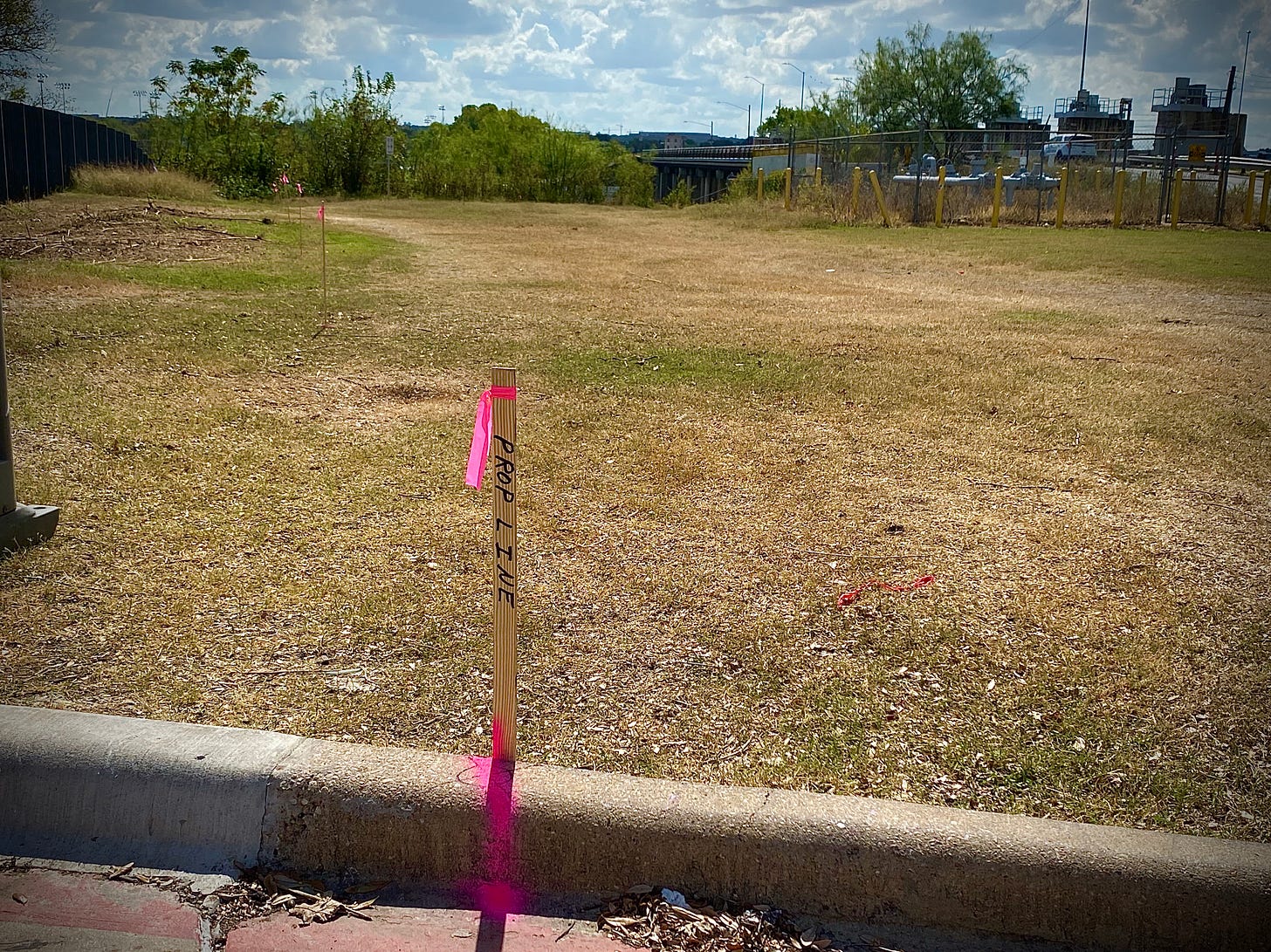
You can still see the ruts in the limestone bed of the river where the wagons used to follow the path of what was an ancient low-water crossing before they built the dam in 1960. On clear autumn days the big turtles are out there sunning themselves on the concrete wall that tries to calm the discharge, and the egrets line up waiting for the fat carp to spill out from the bottom of the man-made lake named after the presidential spouse everyone called Lady Bird.
When I ran by there Friday, I nearly collided with a beautiful peregrine on its way to the river, causing it to abruptly bank and return to its perch on one of the arc lights over the ball fields. I’d never seen the brown of a falcon’s feathers that close, a rich autumnal brown with a tint of pumpkin orange. The falcons don’t seem to be as common as the red-shouldered hawks around here, but it may be that they are just stealthier.
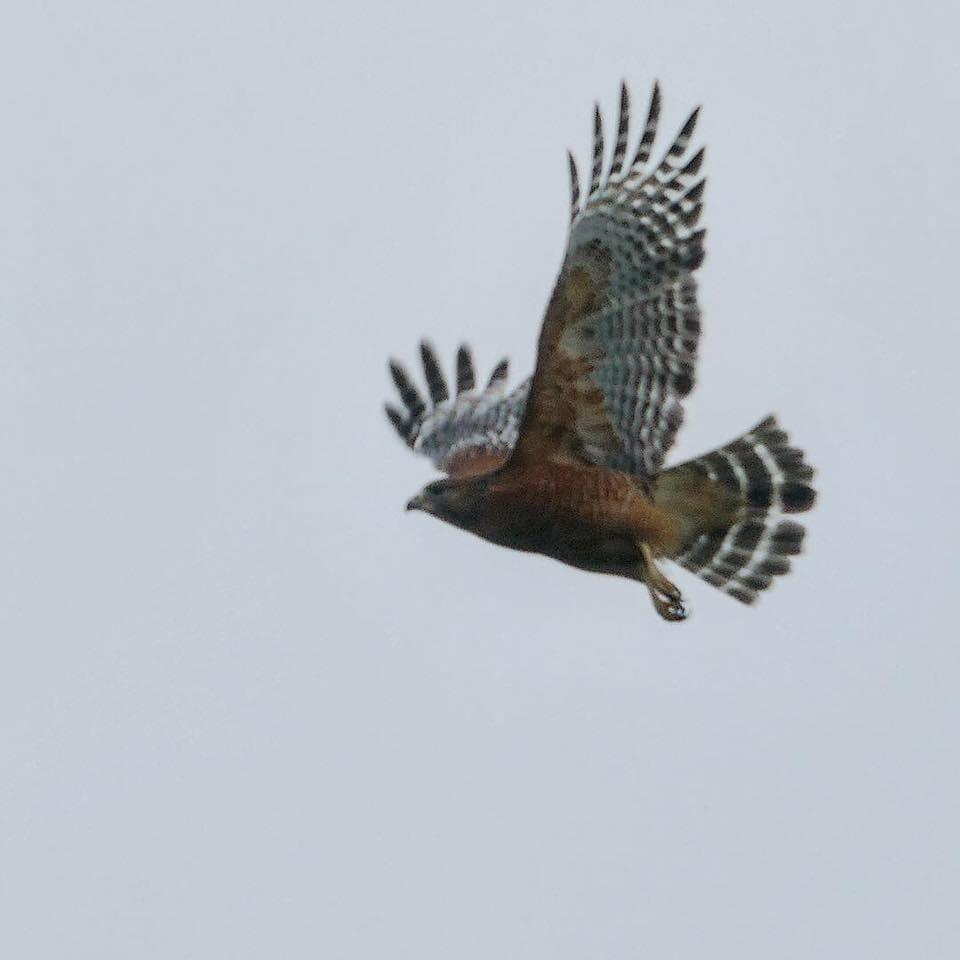
Tuesday morning when I returned from dropping our daughter off I could hear the dogs going nuts at the back of the yard, barking at something in the woods. Our East Austin street retriever barking with the kind of alarm that let’s you know it’s serious.
When I got back there, she was at the top of the bluff raising her ruckus while her Kishu brother was down below, charging along the fence line. As I got to the edge, I could see the wild canine they were interacting with through the chain link.
It was a weirdly scruffy coyote, grayish with mottled, clumpy fur. Maybe one of those mangy specimens I see on the trailcams, among the few that seem to live here in the woods behind the door factory year-round. Not the first time I have come upon a coyote engaging with our dogs at the fence, especially common at the beginning of fall and the end of winter. The dog people will tell you that the coyotes are trying to lure the dogs out—come play with me, meet my friends—with a view to killing and eating them. I wonder if that’s really what’s going on.

They were sufficiently engaged in their canine communications that it took a long minute before the coyote noticed me. It might have taken longer if I hadn’t been fumbling with my phone, managing to finger over the lens in my effort at backyard Wild Kingdom. When it finally saw me, we locked gazes for a moment before it trotted over the little ravine of trash and disappeared into the tall grass. It made me wonder where they den back there, and how healthy they are.
Later in the day I jogged to the grocery store to get exercise and limes at the same time. I passed over the concrete creek, still wet from the last rain, spray-painted flowers in bloom on the pillars. I crossed an empty field, and then passed a house where you could see the indentation made in the chain link gate by some hard-headed dog. Not far from the spot where we got attacked by a loose pit bull a few years ago. A breed that kind of tells you everything you need to know about the human beings that breed them.

Coyotes and dogs are weird cousins. Especially urban coyotes and urban dogs. Sometimes I see a wild canine here that looks like a mix of the two. I don’t see as many feral dogs in these woods as I used to, probably because they are so good at disappearing. All the life going on around us that we don’t see, actively evading our gazes. That it exists, that it can exist, is a hopeful indicator.
The hawks see it all. And on Saturday morning we were glad to see one of the pair that nests in that traffic island. We had set out thinking we might, as they seem to like to hunt along the onramps on weekend mornings when the traffic is minimal and the mammals of the field may be more likely to make a run for it. This one was waiting for us above the door factory upon our return, reminding us that power lines and street lamps are even better hunting perches than leafless cottonwoods. This little video gives a decent glimpse of their adaptation to our seemingly unfriendly habitat.
Halloween in the urban woods
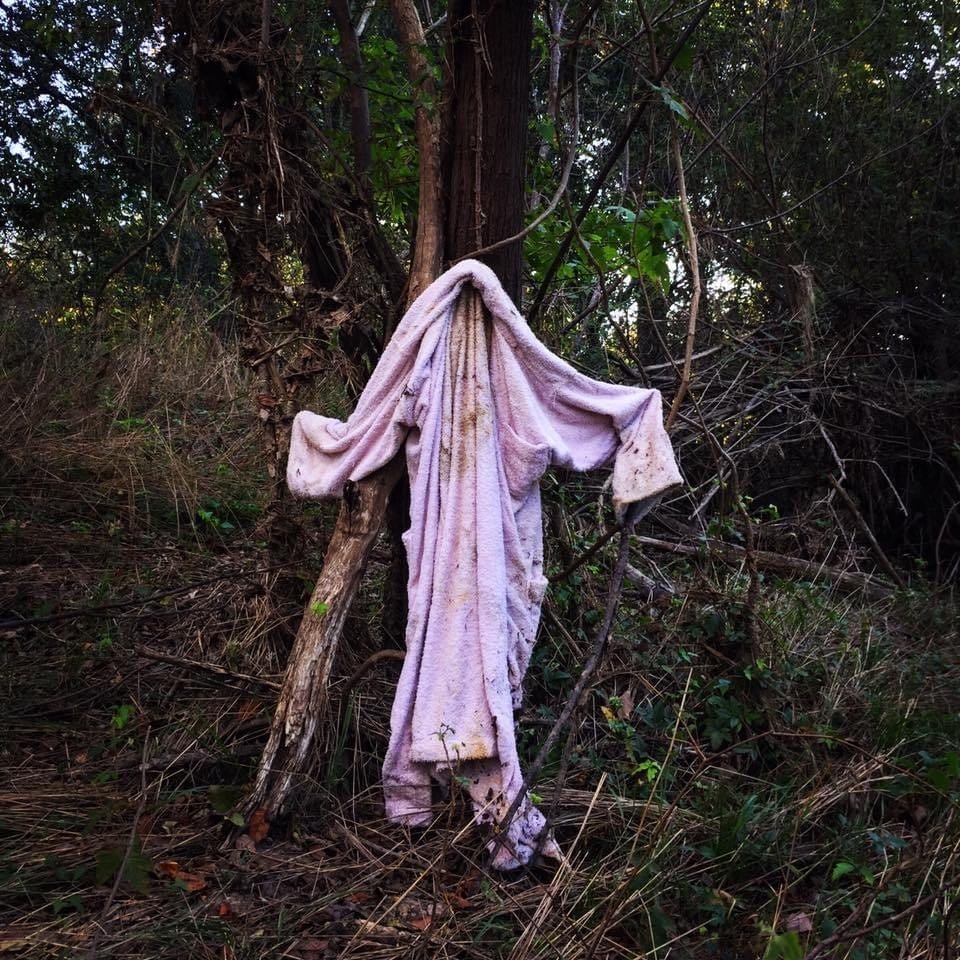
This week’s photobots served up this spooky memory from four years ago: a terrycloth ghost I encountered one morning in the woods below the bridge. A reminder of how creepy these particular woods can be, a zone where human urbanity collides with the wild. A place where I have seen signs of animal sacrifice, gigged stags, nude photo shoots, and the real life zombies that K2 produces.
I’ve been thinking a lot lately about the connection between nature and horror, a nexus I have been exploring as I spec out my next fiction project. It’s a primal connection, wired to our deepest primate instincts. When I was a kid, the woods in the daytime were my favorite place to be, and the idea of entering night woods was the most terrifying thing I could think of. A place where imaginary monsters dwelled, and where ancestor memory warned real danger lurked.
When I was in sixth or seventh grade, suddenly too old to trick or treat, two of my buddies and I had the idea to turbocharge our tween Halloween by giving out candy from the woods behind my house. We dressed up like some 70s lounge druids, draped in dark velour stolen from our mothers’s sewing stations, complete with Spiderman-style face hoods, and set up a lit path where the trick or treaters would be sent down a trail into the pines behind the house. There, surrounded by candles, we dispensed candy from a live severed hand—one of our hands sticking through a gift box filled with stage-blood drenched cotton balls. The set-up was so actually terrifying that the first group of kids ran off screaming, the word got out to stay away, and then we got bored waiting.
The street I live on now is too scary for trick or treaters, even without decorations, and I guess there’s no normal Halloween during quarantine. Maybe I will go for a walk in the woods next Saturday night instead, and see if I can find the spot where the coyotes howl, howls so ghoulish and scary sometimes you are sure some creature is being mauled.
Monster hunters of the Transpecos
I saw a Chupacabra once, five years ago. Or at least the kind of thing you would call a Chupacabra sighting if you were there in the car with the four of us. It was the Sunday night before Memorial Day, and we were spending the long weekend in West Texas with friends visiting from the home state of the Jersey Devil.
I was driving, as we headed east on the high desert highway to the Marfa Lights viewing area, with the space music show playing some ambient weirdness over the local public radio frequency. Suddenly an apparition appeared in our headlights—a grey loper, taller than a coyote and smaller than a deer, lackadaisically sauntering right in front of our car. We all saw it. We all reported it slightly differently.
Having seen a few mangy coyotes over the years before and after. I’d guess that’s probably what it was, but there was something unearthly about it, maybe the way the silver in its coat reflected the eerie lumens of the LED headlights. The urban woods teach you that there are creatures just out of view that don’t really fit into the strictures of our taxonomy. Individual types, in many cases, mixes, whether of different species of wild canids, of coyotes with dogs, or just of dogs gone wild. Chupacabra may not be real, but the names we have developed to describe the animals that are don’t really adequately describe the emergent creatures that are incubating and evolving in the margins of our domain.
Saturday’s Texas Observer newsletter included a link to this excellent piece about our favorite monster of urban legend, and its complex connection with the coyote: “Chasing the Chupacabra,” by Asher Elbein.
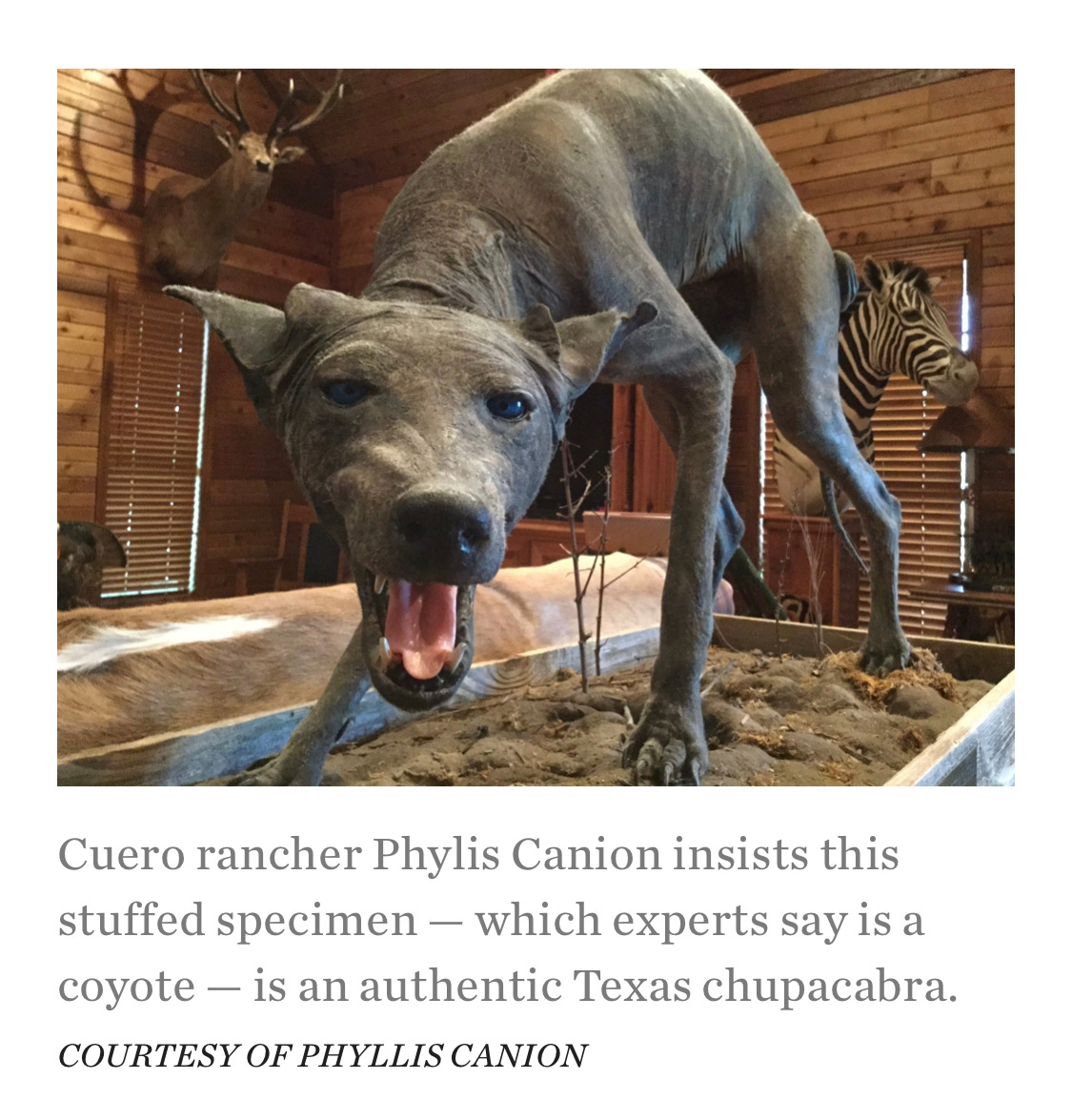
If you’re a recent subscriber to this newsletter, and you are interested in the lore of wild urban canids (including lots of photos and videos), you might enjoy this installment from February, “The Coyotes of Soylent Green.”
Circle Acres update
After my report last week about the fight to prevent a new condo development above the Circle Acres nature preserve managed by a nonprofit on whose board I sit, we got the good news that the developer has finally given up and withdrawn its application. It won’t be the last fight on that street, but it’s rewarding to see that people can effectively mobilize to resist such a project. With luck, a new path will emerge to put genuinely affordable housing there in a way that doesn’t impact the preserve.
Not long after my run-in with the peregrine the other day, I came upon some new graffiti near the site in question, expressing some of the neighborhood sentiment.

Vote for the wild
On the other side of that deserted traffic island Thursday morning, I came upon what may be the perfect flag for America in the last week of October 2020, hanging above the entry to an abandoned building most recently used to process used kitchen grease. A reminder to those of us who can to get out and vote, no matter what the East Austin Maoists say.
Near that same spot, I found this edgeland auspice by the side of the road, telling another part of the same story.
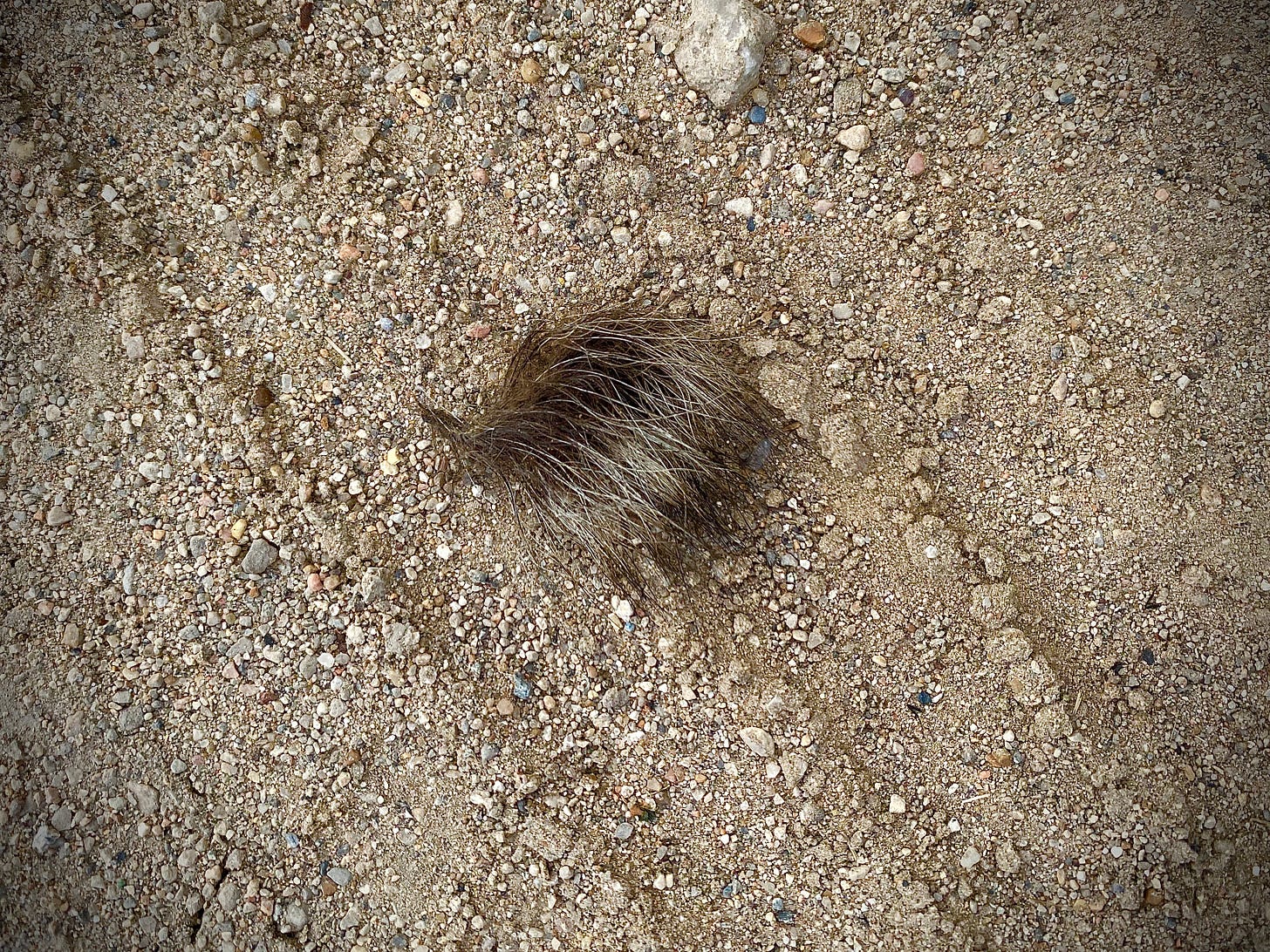
Have a spooky week.

